Eight content marketing types
Eight content marketing colleagues who all tick differently (and how they become a real team)

Talk to ten people today about "content marketing" and you'll get fifteen opinions. Fifteen realities. Fifteen approaches. "Content marketing" is a chimera, a fantasy being, because everyone in marketing (and in communication) produces "content" in some way, but everyone has a completely different perspective. It is clear that this creates silos. However, changing the organization alone, e.g. with a "news room", does not help. In most cases, the problem lies in another space: the one between the ears. If we are really serious about "integrated communication", "omni-channel", "touchpoint management" and "customer journey", we must first and foremost understand ourselves and each other. Otherwise it won't work. This article should help.
It's clear: in theory, in Facebook discussions, in textbooks, in best cases and at conferences, content can do everything. It is super informative, well written, offers an experience, is full of substance, is absolutely authentic, creatively staged and perfectly optimized for Google. It also stands out, attracts attention and supports sales across the board. This is how "content" promises salvation, and everyone really wants something like this. The only problem is that it's easy to be disappointed when the result is somehow "well", "average".
In real life, i.e. "in real life", this one all-round perfect content marketer does not exist. At least not in one person. Everyone has their own special skills, everyone focuses on different aspects, everyone considers different things to be important. Recognizing this is essential for each of us. Without correctly assessing yourself, you won't be able to correctly assess the skills of others. The catch: it can easily happen that there are ten people working in a company who all somehow do"content marketing", but who only seem to mean the same thing when they talk about "content marketing" - or even about "content strategy", then things can quickly get pretty wild. And others also produce content, but refuse to use the term "content marketing". In fact, they are often out of it altogether.

If there is a lack of common understanding and recognition of each other's strengths, it is not only difficult to have a discussion. Good cooperation becomes almost impossible. But isn't that where the real power of content lies? In omni-channel and networking? And in the fact that everyone contributes their strengths and thus compensates for each other's weaknesses - just like in a ... "team"?
The model
We want to help you get to know yourself and your colleagues a little better. With typification. In this typification, we use a model that we have developed ourselves in literally hours of discussions. And we know the types from our experience with around 2,000 content marketing colleagues, with whom we have worked in around 100 strategy mandates and just as many workshops (sometimes more, sometimes less intensive) over the last five years.
The simple idea: different people who work in content marketing have certain preferences, goals and skills. These preferences, goals and skills are different for different types of people. Ultimately, they are "needs". And just as with our external target groups and stakeholders, we should also consider the needs of our internal stakeholders. The more we do this, the better the collaboration will be. And the more we consider the needs of others, the better the chances that others will also respect our needs.
But of course these are just "archetypes". They are not the truth, they are just a model. But you can still learn from it.
What is the focus?
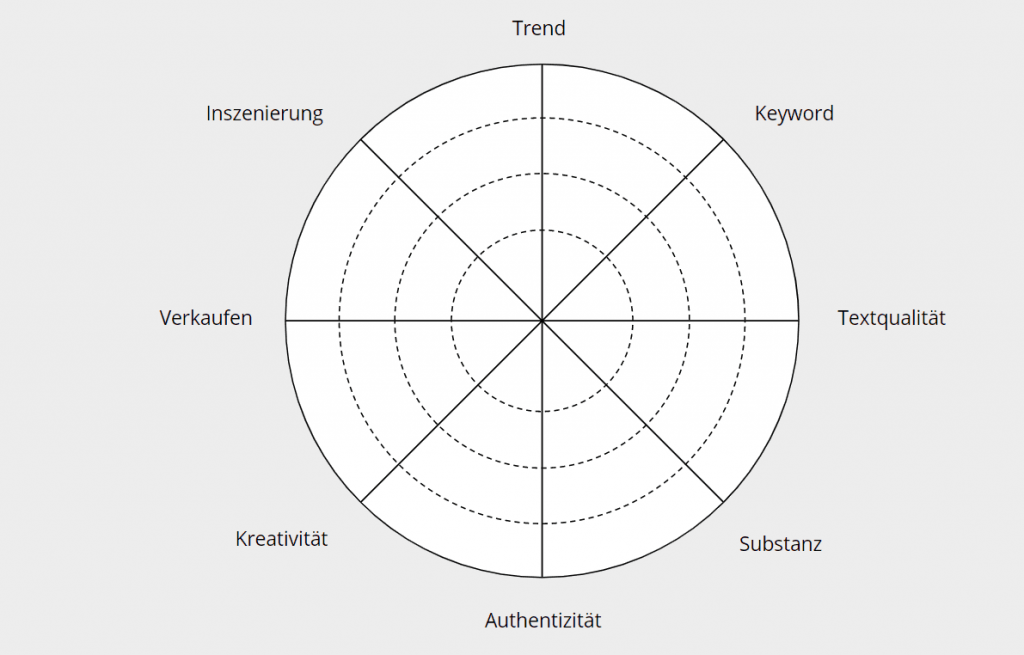
We have identified a total of eight elements, focusing on the characteristic interests. In others, the different content marketers and communicators do not differ, or only insignificantly: "engagement" or (specific) "reach", for example, are relevant for everyone - without them, any communication is worth nothing. In addition, we have concentrated here on key aspects of content conception, planning and production.
The opposing pairs can certainly be understood as polarities. Although "areas of tension" might be a better term. People either follow a trend or they are authentic. They are either interested in substance or staging. They are either concerned with quality or with sales. And they either write strictly according to keywords or they are creative. We'll see later that although these are polarities and areas of tension, they are not real opposites.
Or rather: in sport, "scoring goals" and "preventing goals" are also "opposites". But only when strikers and defenders play together perfectly can a successful team be formed. Competing about who is the better or "more correct" or "real" footballer of the two is pointless. No: it's completely counterproductive.
Trend
Instead of "trend", it could also be "topicality". For some content marketers, following current trends, e.g. with hashtags, in trending topics, current hypes and fashions, is at the top of the priority list. And rightly so. Of course, "topicality" is an important factor: it answers the question of why consumers should engage with the topic right now.
Authenticity
Authenticity here means that content marketing should be "real". According to this view, this distinguishes content marketing from advertising. Advertising "just pretends", content, on the other hand, must really fit the company, you must not fool readers and consumers. On the contrary. After all, content should also build trust. And this opinion is also absolutely right.
Keyword
For other colleagues, the "keyword" is the non-plus-ultra. If a topic currently has a high search volume, then it is a good topic. Then the topic must be optimized for this keyword or the "terms". The majority of content production is then geared towards this goal. And for good reason, because the more people search for a topic, the more potential readers there are.
Creativity
And there are colleagues for whom creativity is everything. Content thrives on ideas, on something special. Regardless of whether you want to entertain or teach others something: it has to surprise. And "pop". After all, "normal" is boring, and content will only be successful if it is different. But nobody searches for "entertainment" on Google. Entertaining content spreads differently and can also be successful without keywords.
Text quality
For others, the focus is on the text itself: a clean sentence structure, a good narrative, clear journalistic standards. In classic terms, this is the "content". In other words, no blah blah blah, but a well-written article that is fun to read and, above all, grammatically and spelling-wise flawless. And that is without question a high value. Maybe not for everyone, but it is important.
Sale
For still others, text quality is just "breadless art". For these colleagues, "sales" is at the top of the list. Or "leads" in all variations: Only as an address, but also as SQL (Sales Qualified Lead) or as MQL (Marketing Qualified Lead). It's also about the CPL, the cost per lead. This is the benchmark. The cheaper the CPL, the better the content. And these colleagues are also right: after all, someone has to pay for all this.
Substance
The real expert is primarily interested in the substance. They are not satisfied with simply curating superficially or somehow picking up the text from a Google search. Figures, data, sound bites: that's the most important thing about content. Opinions alone are at best an accessory, but not the substance. And that is also true in many cases. Because substance is the basis of competence here.
Staging
And finally, there is the staging. Here that means the packaging. The design. The great idea. The main thing is that it looks great and inspires. That's why it's particularly important to this guy that content entertains and is fun. And rightly so: because a lot of people want to be entertained and have fun. For them, content is not important at all.

The eight archetypes
Following these eight elements, we have identified eight basic types that approach the topic of content marketing differently. Of course, there are a few more types in addition to these. But we don't want to dwell on these "evils": The driven, the spammers, the copycats or the pushy.
The different types pursue different goals, focus on different aspects and often even have different mindsets. Consequently, the different content marketing types also set different priorities when it comes to content production. Rarely can someone or a strategic approach be assigned one hundred percent to a specific type. As a rule, we find mixed forms - but where one particular type dominates. This is the case with models. They simplify and generalize a little - but they make the principle clear.
Ideally, these outstanding soloists can complement each other perfectly: If they have understood what makes them and the others tick. And that their disciplines can complement each other.
PS: For reasons of readability, we have refrained from using perfectly gender-neutral terminology, but have sometimes used female and sometimes male forms. We kindly ask you to think of the other gender in each case.
The SEO (m/f/d)
"The best content is useless if it can't be found." This is the motto of those who pursue this strategy. It is also about occupying a topic and positioning yourself thematically. Modern SEOs want to establish authority on a topic.
Focus on keywords and trends
To achieve this, SEO focuses heavily on keywords and terms when managing topics and production. The aim is to rank well in search engines and generate backlinks in order to generate traffic on their online media.
Trends also play an important role for them, as people now have to search for the keyword. However, trends are already downstream of the actual keyword. Text quality, staging and sales orientation must also be taken into account, but they are rather optional. And substance, authenticity and creativity do not interfere, but do not play a major role.
The importance of SEO
Of course, even in these times of the semantic web, it is important and right to keep an eye on target-oriented terminology. SEO should therefore almost always be on board. As a standalone content strategy, however, this approach has disadvantages. For one thing, traffic is not everything, and SEO-optimized content alone is not the best way to build trust. Especially those who rank well with poor content effectively burn out their target groups.
And readers quickly learn that if you don't offer good content, they will soon stop clicking even if you are number 1. And then Google will also penalize you. And secondly, the pure keyword approach has the disadvantage that your own profile is often neglected and does not come to the readers' attention clearly enough. If you only follow in the footsteps of others, you won't leave a mark yourself
Alternative terms: ramp sow, social media prof, trend surfer, agenda surfer.
His silo: social media department.
His goals/KPIs: Generate reach and engagement.
His potential strengths: Achieving visible success and recognition quickly.
Its potential weaknesses: Not very sustainable, limited to social media, rarely unique and therefore interchangeable. If there is no substance, there is a risk of being perceived as a "dazzler".
His channels:
Owned media: Social media.
Earned media: Twitter trends etc.
Methods: Selfies, creative moving images, funny memes, selfies, expressive texts, strong headlines, great photos, selfies. Be sure to pick up on the latest buzz. And post selfies. Anything that "pops" and is hip. Of course, virtual reality, selfies, augmented reality, mixed reality and artificial intelligence are also a must.
Helpful tools: Canva, Social Listening for Buzz, BuzzSumo.
The team player: Attention and engagement are important, but of course they are not everything. Choose what you post even more carefully so that your content fits in better with a central story. This gives your company a strong profile. And bring substance to your topics. Seek closer cooperation with colleagues from PR or corporate publishing.
And personally? This colleague's "the main thing is colorful, loud, viral and trendy" is a real pain in the neck for pretty much all other content marketing colleagues. They miss pretty much everything about his content that is important to them - everything that they themselves stand for. And conversely, the social media pro is convinced that his colleagues have no idea what is important out there in social media. Apart from him, nobody knows how to attract attention. The trick now is to go from trend surfer to trendsetter. Making concentrated expertise go viral. Communicating authentic ideas in a creative and social media-friendly way. And that certainly only works - you guessed it - as a team.
The Publisher (m/f/d)
"What is really good also gets recognition" is the credo of those who focus on text quality. Of course this is true. However, the content must first be found or "brought to the man". And the image and reputation of the content creators also play an important role in how users rate it: the best content will fall flat in the eyes of users if it comes from a questionable or unpopular source.
Focus on text quality
"Text quality speaks for itself - and for the content," say the proponents of this approach. If a text is coherently structured, brilliantly written, easy to understand and entertaining, it will be read a lot and with pleasure.
All other elements are very individual for the publisher. Sometimes they need substance - if they are writing for a specialist medium, for example - but a superficial presentation is also sufficient in tabloid media. Keywords are important in online media, but naturally less so in print. Sometimes it has to be a creative text, but sometimes a very dry message is enough. And the sale? No harm done, but the quality of the text must not suffer as a result.
The importance of the publisher
It pays to have a publisher on your team. Our language, whether written or spoken in videos and podcasts, is the most important element of our communication. And that is the publisher's domain. But they must also learn not to overdo it: Text and language are not always everything. It also depends on the target group. And the goal.
Alternative terms: ramp sow, social media prof, trend surfer, agenda surfer.
His silo: social media department.
His goals/KPIs: Generate reach and engagement.
His potential strengths: Achieving visible success and recognition quickly.
Its potential weaknesses: Not very sustainable, limited to social media, rarely unique and therefore interchangeable. If there is no substance, there is a risk of being perceived as a "dazzler".
His channels:
Owned media: Social media.
Earned media: Twitter trends etc.
Methods: Selfies, creative moving images, funny memes, selfies, expressive texts, strong headlines, great photos, selfies. Be sure to pick up on the latest buzz. And post selfies. Anything that "pops" and is hip. Of course, virtual reality, selfies, augmented reality, mixed reality and artificial intelligence are also a must.
Helpful tools: Canva, Social Listening for Buzz, BuzzSumo.
The team player: Attention and engagement are important, but of course they are not everything. Choose what you post even more carefully so that your content fits in better with a central story. This gives your company a strong profile. And bring substance to your topics. Seek closer cooperation with colleagues from PR or corporate publishing.
And personally? This colleague's "the main thing is colorful, loud, viral and trendy" is a real pain in the neck for pretty much all other content marketing colleagues. They miss pretty much everything about his content that is important to them - everything that they themselves stand for. And conversely, the social media pro is convinced that his colleagues have no idea what is important out there in social media. Apart from him, nobody knows how to attract attention. The trick now is to go from trend surfer to trendsetter. Making concentrated expertise go viral. Communicating authentic ideas in a creative and social media-friendly way. And that certainly only works - you guessed it - as a team.
The expert (m/f/d)
"Superficial doesn't work at all," says the expert. And she's right, especially in B2B, because with hasty buzzword content you only annoy demanding readers, offer them no benefit and join the myriad of wannabes and untrustworthy traffic hunters. Not good for your image. You just have to make sure that the content is still a pleasure to read, that the balancing act between depth and lightness is successful.
Focus on substance
Substance is the most important thing, say the advocates of this aspect. Just no superficial waffle, but rather communicating a topic in an extremely well-researched and thoroughly thought-out way.
This creates trust in expertise and competence. After all, credibility and reliability of content are the most important things. Very often, text quality and authenticity also play an important role for the expert. However, they come after the fact. Because substance stands alone, he believes. Everything else, however, is dispensable. It doesn't bother him, but it must never dominate the substance.
The importance of the expert
The expert is worth her weight in gold, especially in the B2B sector. And everyone should be happy to have her on their team. This also applies to the "special interest" sector. However, the expert must also know herself well enough and not take herself too seriously. Substance is only one important aspect - one of many. (Specialist) experts in particular tend to communicate in a somewhat "dry" way. Just think of Sheldon Cooper. If the expert sees herself in the same way and does not exaggerate her own expertise, she is a great team partner.
Alternative terms: ramp sow, social media prof, trend surfer, agenda surfer.
His silo: social media department.
His goals/KPIs: Generate reach and engagement.
His potential strengths: Achieving visible success and recognition quickly.
Its potential weaknesses: Not very sustainable, limited to social media, rarely unique and therefore interchangeable. If there is no substance, there is a risk of being perceived as a "dazzler".
His channels:
Owned media: Social media.
Earned media: Twitter trends etc.
Methods: Selfies, creative moving images, funny memes, selfies, expressive texts, strong headlines, great photos, selfies. Be sure to pick up on the latest buzz. And post selfies. Anything that "pops" and is hip. Of course, virtual reality, selfies, augmented reality, mixed reality and artificial intelligence are also a must.
Helpful tools: Canva, Social Listening for Buzz, BuzzSumo.
The team player: Attention and engagement are important, but of course they are not everything. Choose what you post even more carefully so that your content fits in better with a central story. This gives your company a strong profile. And bring substance to your topics. Seek closer cooperation with colleagues from PR or corporate publishing.
And personally? This colleague's "the main thing is colorful, loud, viral and trendy" is a real pain in the neck for pretty much all other content marketing colleagues. They miss pretty much everything about his content that is important to them - everything that they themselves stand for. And conversely, the social media pro is convinced that his colleagues have no idea what is important out there in social media. Apart from him, nobody knows how to attract attention. The trick now is to go from trend surfer to trendsetter. Making concentrated expertise go viral. Communicating authentic ideas in a creative and social media-friendly way. And that certainly only works - you guessed it - as a team.
The creator of meaning (m/f/d)
"In these difficult times, every company must also make statements, show backbone and make the world a better place." The Sinnstifter vehemently postulate the social, political and societal responsibility of business enterprises. And they know that this is exactly what goes down well with people, including their customers. Finally, products whose producers you can identify with in good conscience. Finally, products that you don't have to shamefully hide in your shopping cart because the manufacturer is stealing water from the world's poor in order to sell it back to them at a high price... But be careful: anyone who exposes themselves in this way must be extremely credible.
Focus on authenticity
"Authenticity is the most important criterion for good content," say supporters of this approach. Especially in these times of fake news and staging. If content is genuine, credible and transparent, it becomes credible. And what could be more important? And for this to work, it needs substance, only then will the content be convincing. Text quality and creativity also play a role, but are secondary. A sales contribution, staging, trends and keywords don't bother anyone, but are not the focus.
The importance of the creator of meaning
The creator of meaning has a hard time. If this strategy is not prescribed "from above", the meaning will only ever be superficial and secondary. Gillette, for example, is currently undergoing a transformation, repositioning itself and promoting a new role for men. In such companies or brands, the sense maker is in perfect hands, because only she can ensure that such projects are consistently and credibly implemented. However, if these creators of meaning have no explicit support from the decision-maker level, they will be frustrated - and at some point will see their work as "pointless".
Alternative terms: ramp sow, social media prof, trend surfer, agenda surfer.
His silo: social media department.
His goals/KPIs: Generate reach and engagement.
His potential strengths: Achieving visible success and recognition quickly.
Its potential weaknesses: Not very sustainable, limited to social media, rarely unique and therefore interchangeable. If there is no substance, there is a risk of being perceived as a "dazzler".
His channels:
Owned media: Social media.
Earned media: Twitter trends etc.
Methods: Selfies, creative moving images, funny memes, selfies, expressive texts, strong headlines, great photos, selfies. Be sure to pick up on the latest buzz. And post selfies. Anything that "pops" and is hip. Of course, virtual reality, selfies, augmented reality, mixed reality and artificial intelligence are also a must.
Helpful tools: Canva, Social Listening for Buzz, BuzzSumo.
The team player: Attention and engagement are important, but of course they are not everything. Choose what you post even more carefully so that your content fits in better with a central story. This gives your company a strong profile. And bring substance to your topics. Seek closer cooperation with colleagues from PR or corporate publishing.
And personally? This colleague's "the main thing is colorful, loud, viral and trendy" is a real pain in the neck for pretty much all other content marketing colleagues. They miss pretty much everything about his content that is important to them - everything that they themselves stand for. And conversely, the social media pro is convinced that his colleagues have no idea what is important out there in social media. Apart from him, nobody knows how to attract attention. The trick now is to go from trend surfer to trendsetter. Making concentrated expertise go viral. Communicating authentic ideas in a creative and social media-friendly way. And that certainly only works - you guessed it - as a team.
The campaigner (m/f/d)
"Uncreative things always go wrong," say the creatives. And they are right in that original content keeps readers interested. We crave to be entertained, love stories with a surprising twist and punchline and remember such content pieces surprisingly well. The brain thinks in stories. But does this also make us remember the brand, do we inevitably buy the products of the company that entertains us so well?
Focus on creativity
"Creativity is what makes content stand out from the rest," postulate the proponents of this approach. Original and original content is what readers want.
It is highly sharable and has the best chance of going viral. It keeps us in the readers' minds and they think we're great. Sales usually play an equally important role for campaigners in commercial companies. The campaigner makes clever use of staging, trends and keywords, while text quality, substance and authenticity only play a subordinate role. If they help to achieve the goal, she is happy to incorporate them, but otherwise she can do without them.
The importance of the campaigner
The campaigner plays a particularly important role when it comes to more complex and completed projects with a clearly defined beginning and end. She is the sprinter, so to speak. She can bring all the loose ends together and create a real "composition" in which the whole is more than the sum of its parts. Then she is very valuable to the team. However, she must be just as cautious with smaller projects as she is with long-running ones. Not everything is a "campaign" and campaign thinking is not effective for everything.
Alternative terms: ramp sow, social media prof, trend surfer, agenda surfer.
His silo: social media department.
His goals/KPIs: Generate reach and engagement.
His potential strengths: Achieving visible success and recognition quickly.
Its potential weaknesses: Not very sustainable, limited to social media, rarely unique and therefore interchangeable. If there is no substance, there is a risk of being perceived as a "dazzler".
His channels:
Owned media: Social media.
Earned media: Twitter trends etc.
Methods: Selfies, creative moving images, funny memes, selfies, expressive texts, strong headlines, great photos, selfies. Be sure to pick up on the latest buzz. And post selfies. Anything that "pops" and is hip. Of course, virtual reality, selfies, augmented reality, mixed reality and artificial intelligence are also a must.
Helpful tools: Canva, Social Listening for Buzz, BuzzSumo.
The team player: Attention and engagement are important, but of course they are not everything. Choose what you post even more carefully so that your content fits in better with a central story. This gives your company a strong profile. And bring substance to your topics. Seek closer cooperation with colleagues from PR or corporate publishing.
And personally? This colleague's "the main thing is colorful, loud, viral and trendy" is a real pain in the neck for pretty much all other content marketing colleagues. They miss pretty much everything about his content that is important to them - everything that they themselves stand for. And conversely, the social media pro is convinced that his colleagues have no idea what is important out there in social media. Apart from him, nobody knows how to attract attention. The trick now is to go from trend surfer to trendsetter. Making concentrated expertise go viral. Communicating authentic ideas in a creative and social media-friendly way. And that certainly only works - you guessed it - as a team.
The Lead Machine (m/f/d)
Those who pursue this strategy are practicing content marketing according to the motto "Constant dripping wears away the stone". Users are continuously offered knowledge in exchange for their contact details. In this way, the company collects data and generates more or less qualified leads. The chances that users of these offers will gradually work their way up the sales funnel are higher the more substantial the free knowledge they receive and the better the content marketers succeed in whetting their appetite for the paid offer.
Focus on sales and conversions
Sales and conversions of all kinds are the top priority for proponents of this concept. "No content without a call to action" could be their motto. The main aim of content marketing is to motivate readers to take certain actions:
To buy something, subscribe to a newsletter, visit a website, take part in a survey. However, the lead machine has also learned that staging, trends and keywords can help it to achieve its goals. However, it does not develop a passion for this. However, she is more skeptical about text quality, substance, authenticity and creativity . If you make it clear that they sell better, then she accepts that; if you don't succeed, then these criteria may not be met in the content.
The importance of the lead machine
Without question, the lead machine brings in money. It is particularly popular with finance managers because it can deliver business-relevant "figures". And in companies where this is and should be all that matters, it will dominate the other members of the team.
However, the risk of disappointing the user is quite high with this approach. On the one hand, the materials to be downloaded often only contain rather generic tidbits of knowledge that do not really allow the reader to build up competence. On the other hand, they may get the stale feeling that they are only being fed with the materials for paid services and that the publisher is actually only keen on their data. There is a danger that this approach will nip trust in the bud instead of building it up. The lead machine should therefore learn that you can only be successful in the long term if you recognize and take into account the qualities and talents of others. Creativity, authenticity, substance and all the rest are not a "breadless art", but important instruments in the overall concept.
Alternative terms: ramp sow, social media prof, trend surfer, agenda surfer.
His silo: social media department.
His goals/KPIs: Generate reach and engagement.
His potential strengths: Achieving visible success and recognition quickly.
Its potential weaknesses: Not very sustainable, limited to social media, rarely unique and therefore interchangeable. If there is no substance, there is a risk of being perceived as a "dazzler".
His channels:
Owned media: Social media.
Earned media: Twitter trends etc.
Methods: Selfies, creative moving images, funny memes, selfies, expressive texts, strong headlines, great photos, selfies. Be sure to pick up on the latest buzz. And post selfies. Anything that "pops" and is hip. Of course, virtual reality, selfies, augmented reality, mixed reality and artificial intelligence are also a must.
Helpful tools: Canva, Social Listening for Buzz, BuzzSumo.
The team player: Attention and engagement are important, but of course they are not everything. Choose what you post even more carefully so that your content fits in better with a central story. This gives your company a strong profile. And bring substance to your topics. Seek closer cooperation with colleagues from PR or corporate publishing.
And personally? This colleague's "the main thing is colorful, loud, viral and trendy" is a real pain in the neck for pretty much all other content marketing colleagues. They miss pretty much everything about his content that is important to them - everything that they themselves stand for. And conversely, the social media pro is convinced that his colleagues have no idea what is important out there in social media. Apart from him, nobody knows how to attract attention. The trick now is to go from trend surfer to trendsetter. Making concentrated expertise go viral. Communicating authentic ideas in a creative and social media-friendly way. And that certainly only works - you guessed it - as a team.
The ramp sow (m/f/d)
"The better known I am, the more successful I am" is the credo of this type. Whereby "I" can be exchanged for "my company", "my product" or "my service" at will. According to the motto "Reach rules", content is produced in social media that is designed to be liked, shared and commented on. Small, nicely presented, original and sometimes provocative content pieces are published, the content of which is geared towards what is currently trending.
Focus on trend and staging
"Trend" is one of this type's favorite words. And the staging. That suits him, because the ramp sow always likes to be on stage, loves everything that "pops" and is hip. So bring on virtual reality, augmented reality, mixed reality, artificial intelligence...
This approach enables you to gain followers and engagement relatively quickly. Up-to-dateness is particularly important to the rock star: nothing is older than yesterday's news or trend. Trend surfing and being up to date are her maxims. The hunt is for hype. And "staging wins" - readers want sensations, so they need cool content. The focus is on staging. The most important aspect is to stand out catchily from the mass of content. Everything else: a gift. Not that the rock star would fight against substance and text quality - but certainly not for them either.
The importance of the ramp sow
Anyone who needs attention for their (almost) self-selling product or brand can benefit from this approach. But as a sustainable content marketing strategy, this approach is neither flexible and diverse enough for a brand, nor sufficient in the long term. Nevertheless, the rock star helps every team - as long as it doesn't push itself to the fore.
Alternative terms: ramp sow, social media prof, trend surfer, agenda surfer.
His silo: social media department.
His goals/KPIs: Generate reach and engagement.
His potential strengths: Achieving visible success and recognition quickly.
Its potential weaknesses: Not very sustainable, limited to social media, rarely unique and therefore interchangeable. If there is no substance, there is a risk of being perceived as a "dazzler".
His channels:
Owned media: Social media.
Earned media: Twitter trends etc.
Methods: Selfies, creative moving images, funny memes, selfies, expressive texts, strong headlines, great photos, selfies. Be sure to pick up on the latest buzz. And post selfies. Anything that "pops" and is hip. Of course, virtual reality, selfies, augmented reality, mixed reality and artificial intelligence are also a must.
Helpful tools: Canva, Social Listening for Buzz, BuzzSumo.
The team player: Attention and engagement are important, but of course they are not everything. Choose what you post even more carefully so that your content fits in better with a central story. This gives your company a strong profile. And bring substance to your topics. Seek closer cooperation with colleagues from PR or corporate publishing.
And personally? This colleague's "the main thing is colorful, loud, viral and trendy" is a real pain in the neck for pretty much all other content marketing colleagues. They miss pretty much everything about his content that is important to them - everything that they themselves stand for. And conversely, the social media pro is convinced that his colleagues have no idea what is important out there in social media. Apart from him, nobody knows how to attract attention. The trick now is to go from trend surfer to trendsetter. Making concentrated expertise go viral. Communicating authentic ideas in a creative and social media-friendly way. And that certainly only works - you guessed it - as a team.
The coach - "La Mannschaft"
The strategist's job is to shape the 7 players into a team. He is the coach, so to speak. He has to promote teamwork and develop the game systems. Tools are ideal for the coach, such as our theme score or the Scompler.
The importance of the coach
In an ideal world, there is no need for a coaching strategist. In an ideal world, a team would play together like this. But this ideal world does not exist. There are always personal animosities or stressful situations. Whatever you call the strategist, every team needs one. And everyone should recognize his or her role and not perceive him or her as a head teacher, but as exactly who he or she is: the person who makes excellent soloists into a team.
This approach enables you to gain followers and engagement relatively quickly. Up-to-dateness is particularly important to the rock star: nothing is older than yesterday's news or trend. Trend surfing and being up to date are her maxims. The hunt is for hype. And "staging wins" - readers want sensations, so they need cool content. The focus is on staging. The most important aspect is to stand out catchily from the mass of content. Everything else: a gift. Not that the rock star would fight against substance and text quality - but certainly not for them either.
And if the strategist understands his role in exactly the same way, then he is the guarantor of success.
Alternative terms: ramp sow, social media prof, trend surfer, agenda surfer.
His silo: social media department.
His goals/KPIs: Generate reach and engagement.
His potential strengths: Achieving visible success and recognition quickly.
Its potential weaknesses: Not very sustainable, limited to social media, rarely unique and therefore interchangeable. If there is no substance, there is a risk of being perceived as a "dazzler".
His channels:
Owned media: Social media.
Earned media: Twitter trends etc.
Methods: Selfies, creative moving images, funny memes, selfies, expressive texts, strong headlines, great photos, selfies. Be sure to pick up on the latest buzz. And post selfies. Anything that "pops" and is hip. Of course, virtual reality, selfies, augmented reality, mixed reality and artificial intelligence are also a must.
Helpful tools: Canva, Social Listening for Buzz, BuzzSumo.
The team player: Attention and engagement are important, but of course they are not everything. Choose what you post even more carefully so that your content fits in better with a central story. This gives your company a strong profile. And bring substance to your topics. Seek closer cooperation with colleagues from PR or corporate publishing.
And personally? This colleague's "the main thing is colorful, loud, viral and trendy" is a real pain in the neck for pretty much all other content marketing colleagues. They miss pretty much everything about his content that is important to them - everything that they themselves stand for. And conversely, the social media pro is convinced that his colleagues have no idea what is important out there in social media. Apart from him, nobody knows how to attract attention. The trick now is to go from trend surfer to trendsetter. Making concentrated expertise go viral. Communicating authentic ideas in a creative and social media-friendly way. And that certainly only works - you guessed it - as a team.
Conclusion
In these brief introductions, you have the opportunity to get to know yourself and your colleagues better: Where do you most likely see yourself? What makes which colleague tick? What can you contribute best, and what are you perhaps less talented at? From which colleague do you get exactly this expertise? Nobody has to give up anything here. Everyone will win. The world has become so complex that you can only manage it together.
Incidentally, this doesn't necessarily have anything to do with the official department in which you or your colleagues work. All of the skills and expertise mentioned are often spread across various departments. Get to know each other and benefit from each other. Even if you wouldn't play squash privately with a certain colleague or if a certain colleague annoys you because she is so different from you:
A successful game needs a perfect playing field, a great coach and a fantastic team: With Scompler as a content marketing platform, an excellent content marketing project manager and you as specialists who are also really good team players, you have everything you need.
So you can only win.
By the way, it doesn't really matter what SEO, what PR, what online marketing, what you-know-what-it-all is. Forget the silos. Yes, you all have good channel expertise, and you have to have it. But good communication today is "omni-channel". And what connects you is the "content", the "story". Here you are a team. Even if everyone then goes to their own channel and does their job there.
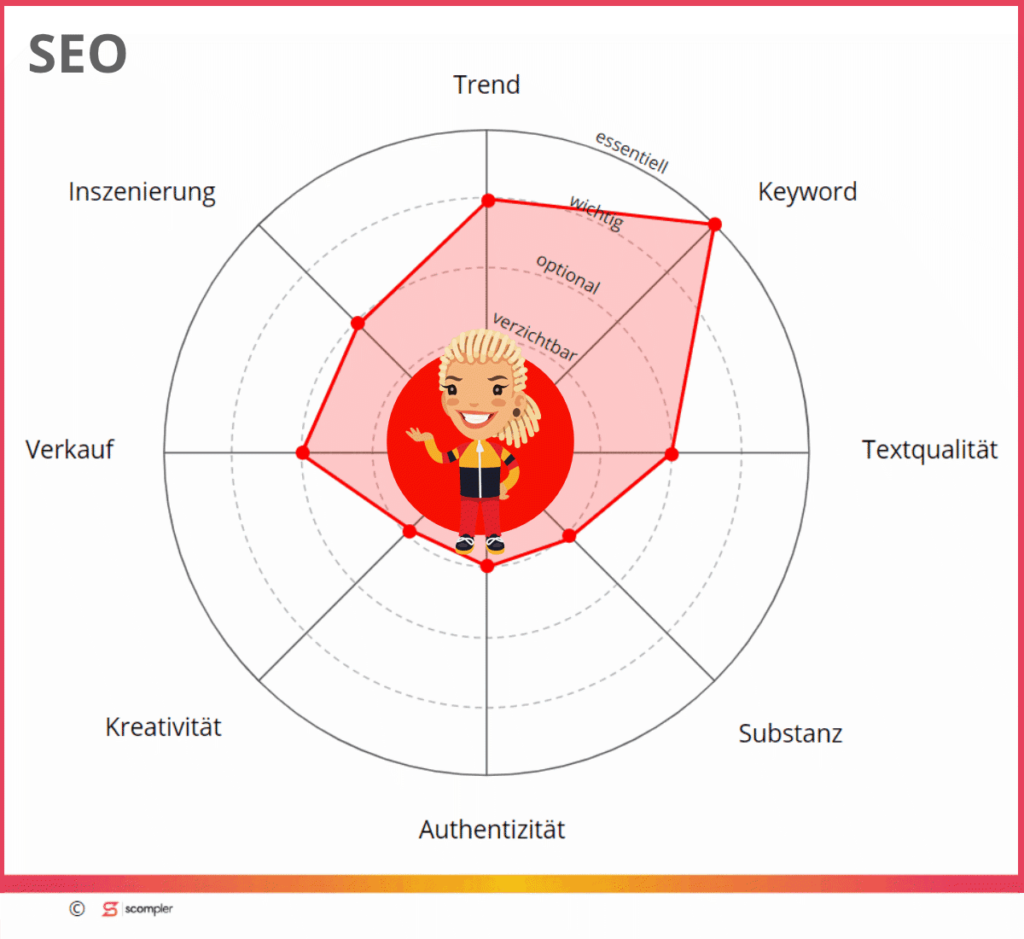
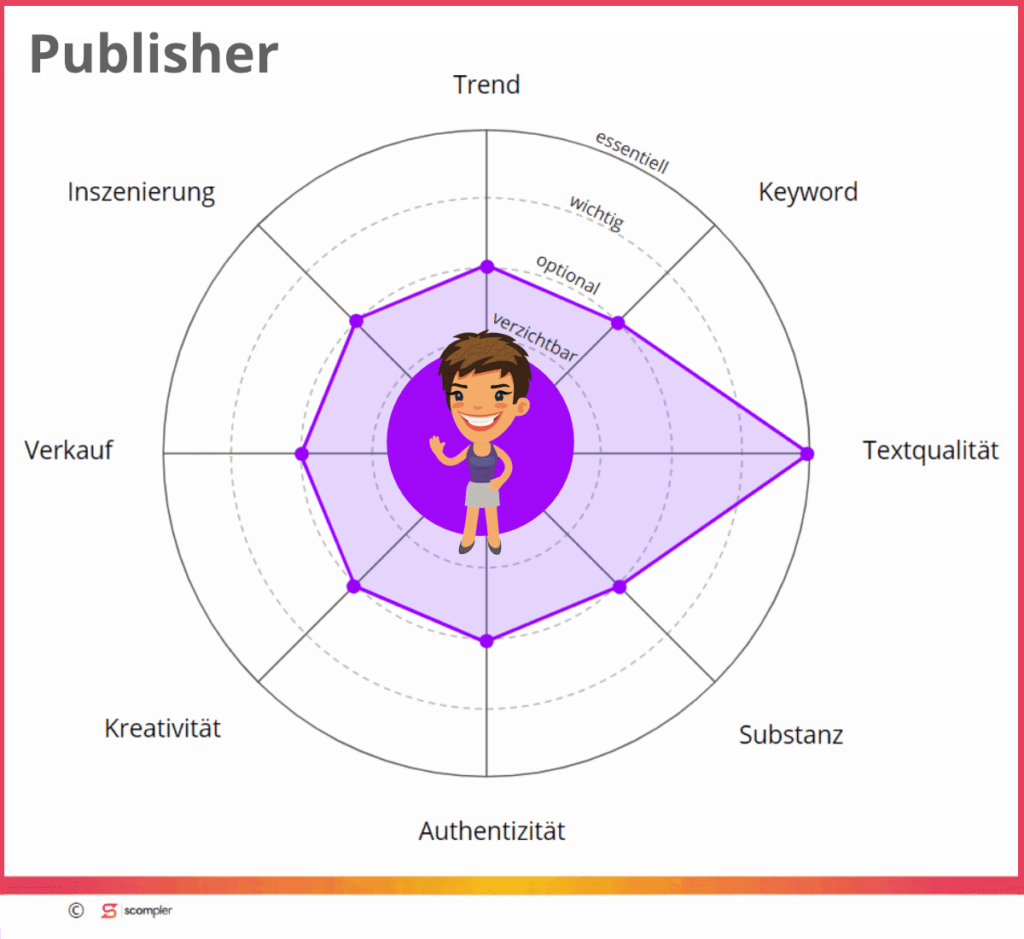
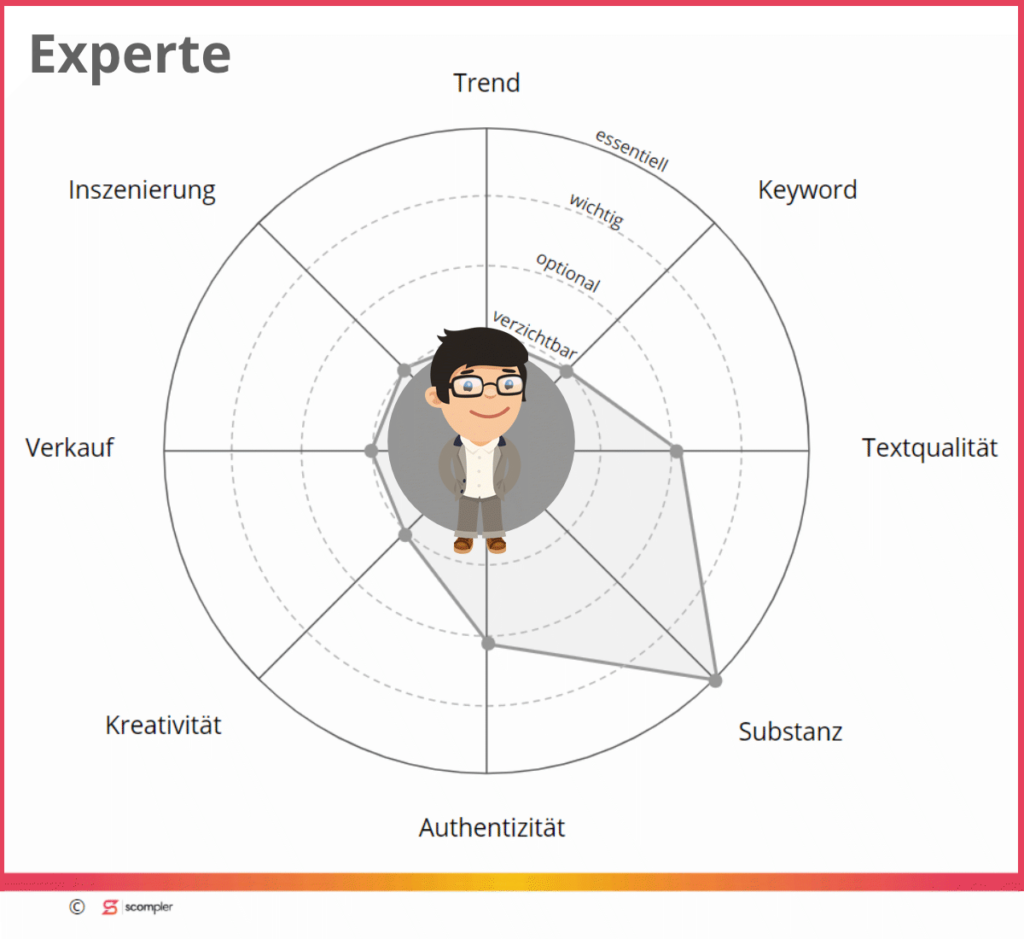
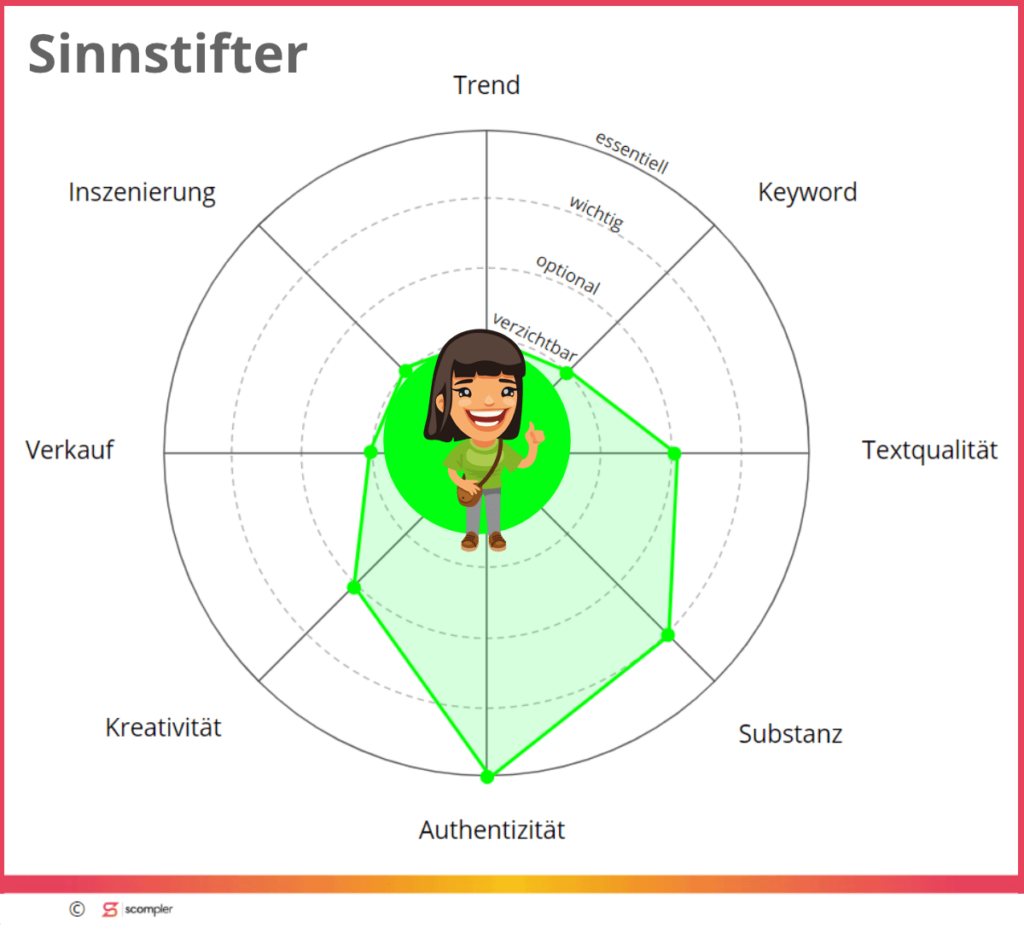
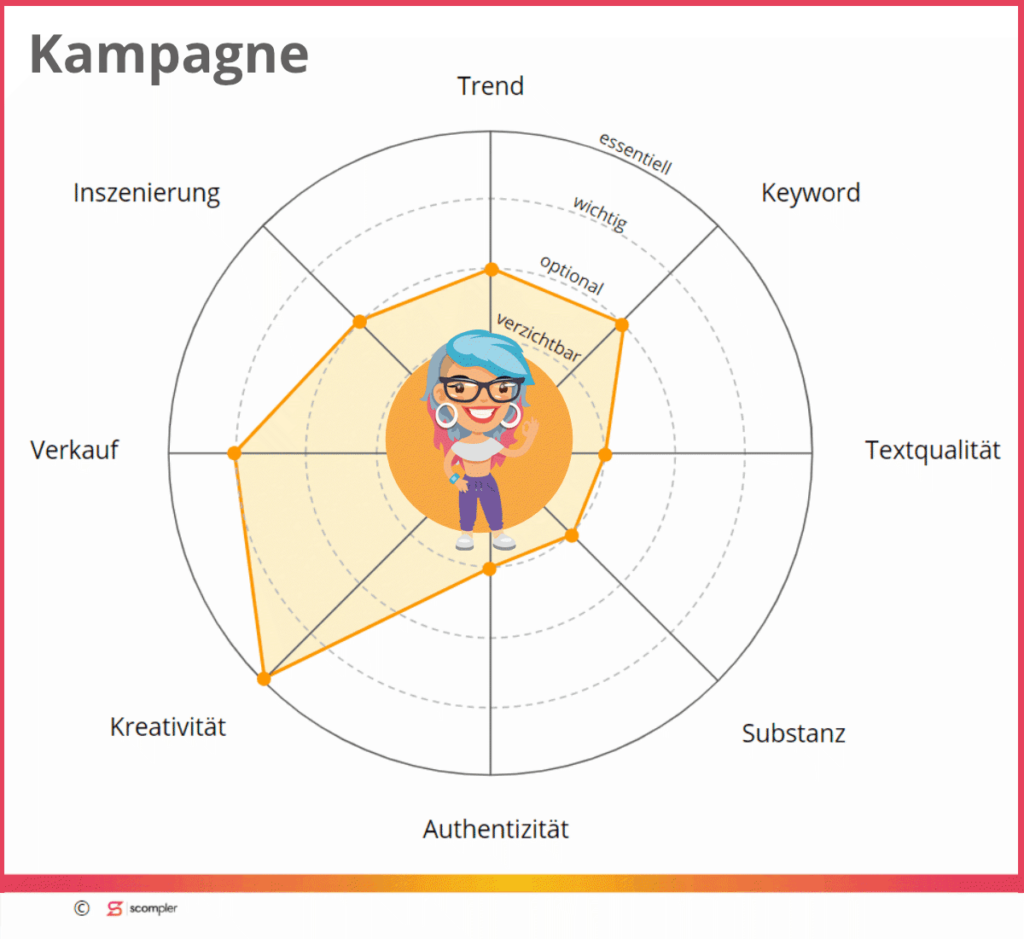
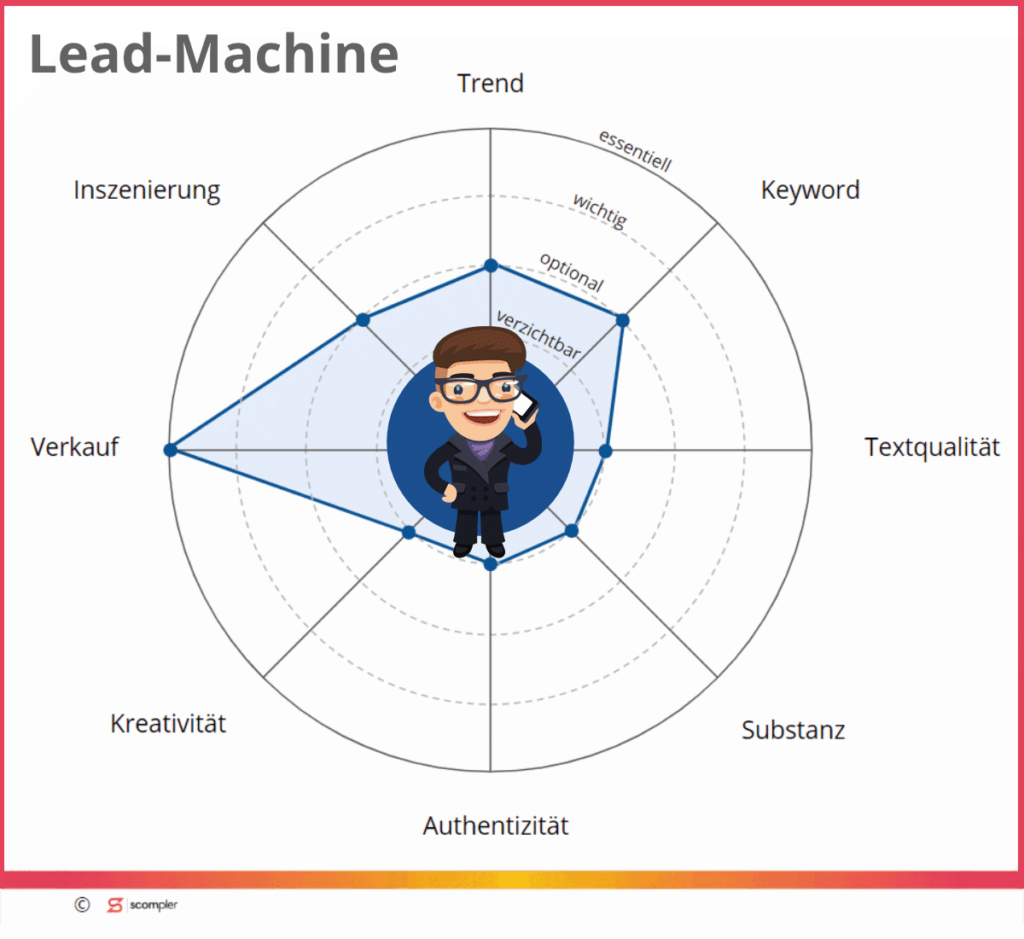
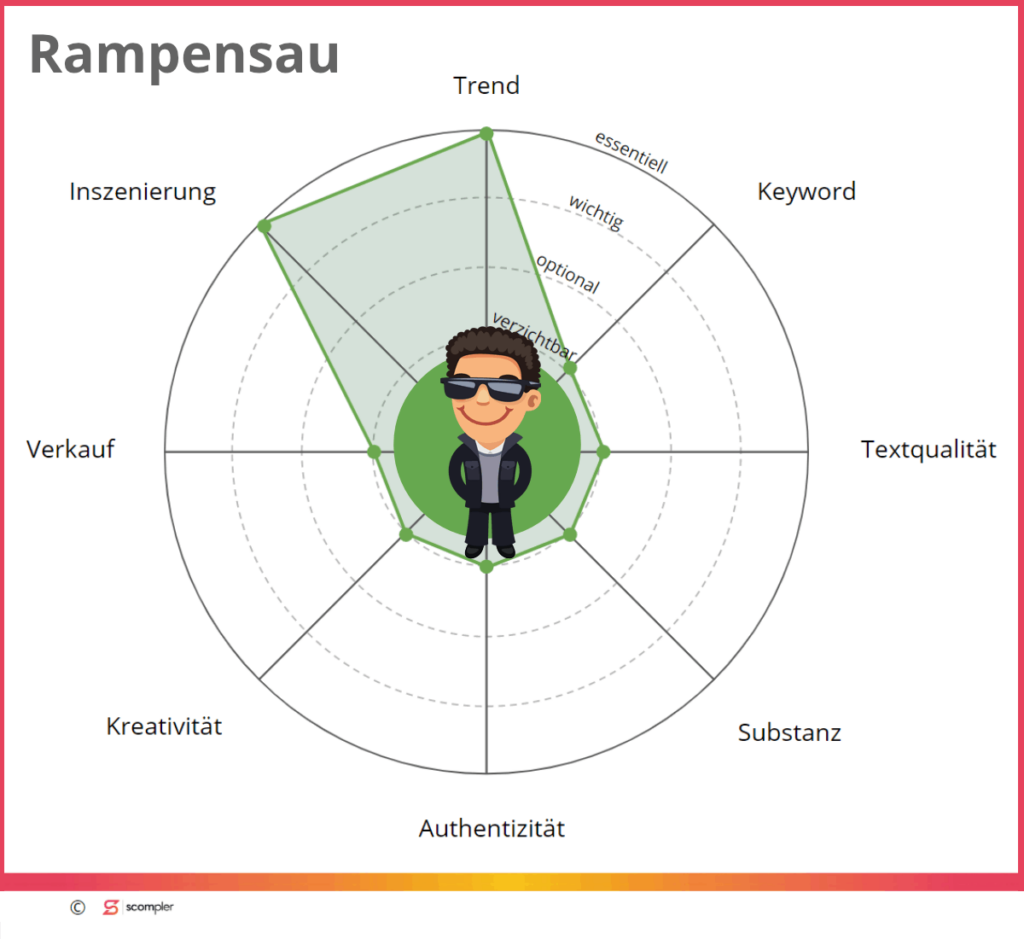
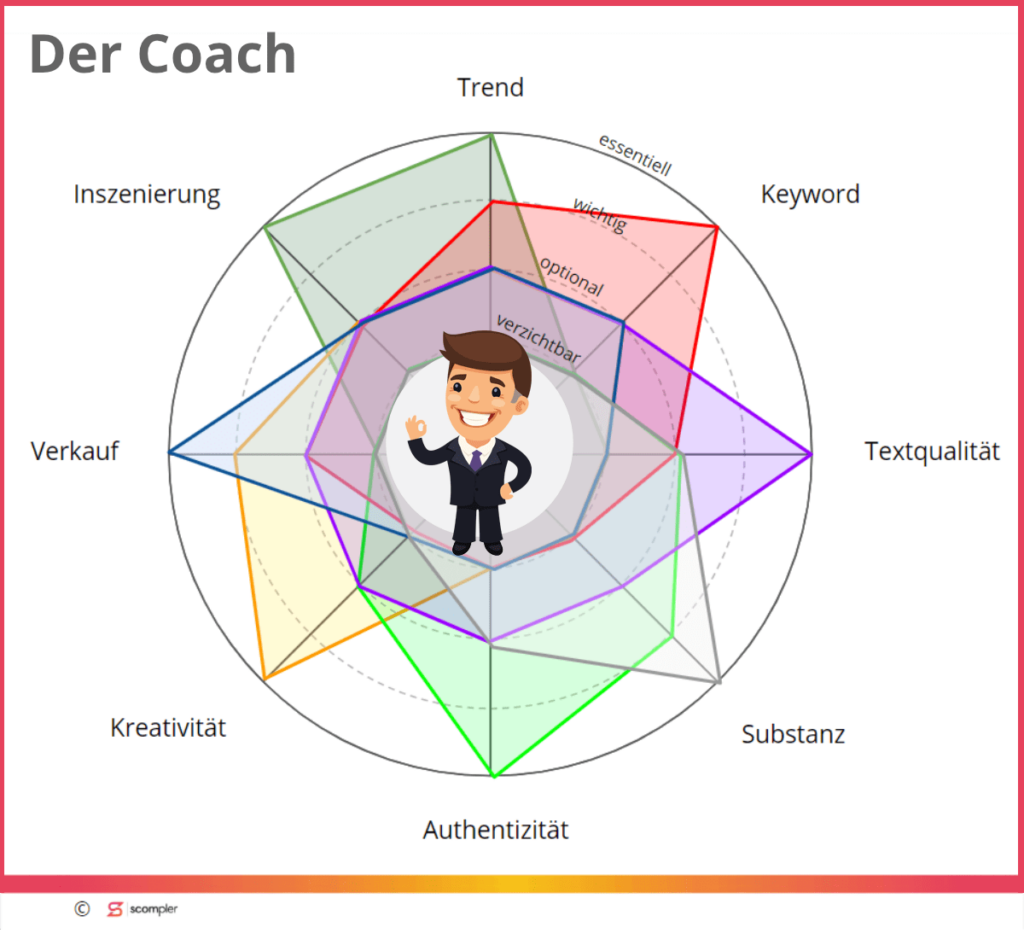
Write a comment
Your e-mail address will not be published. Required fields are marked with *.